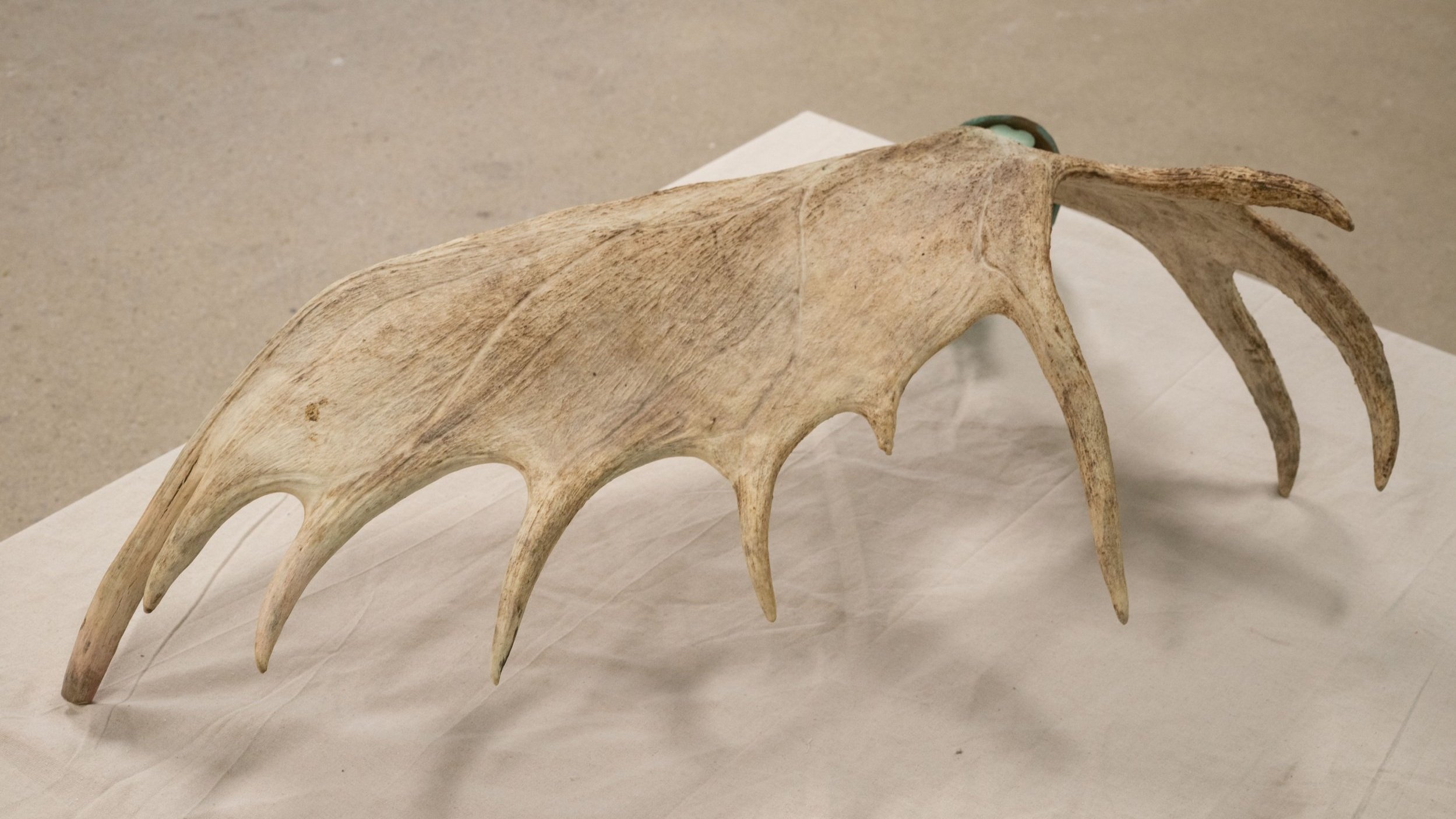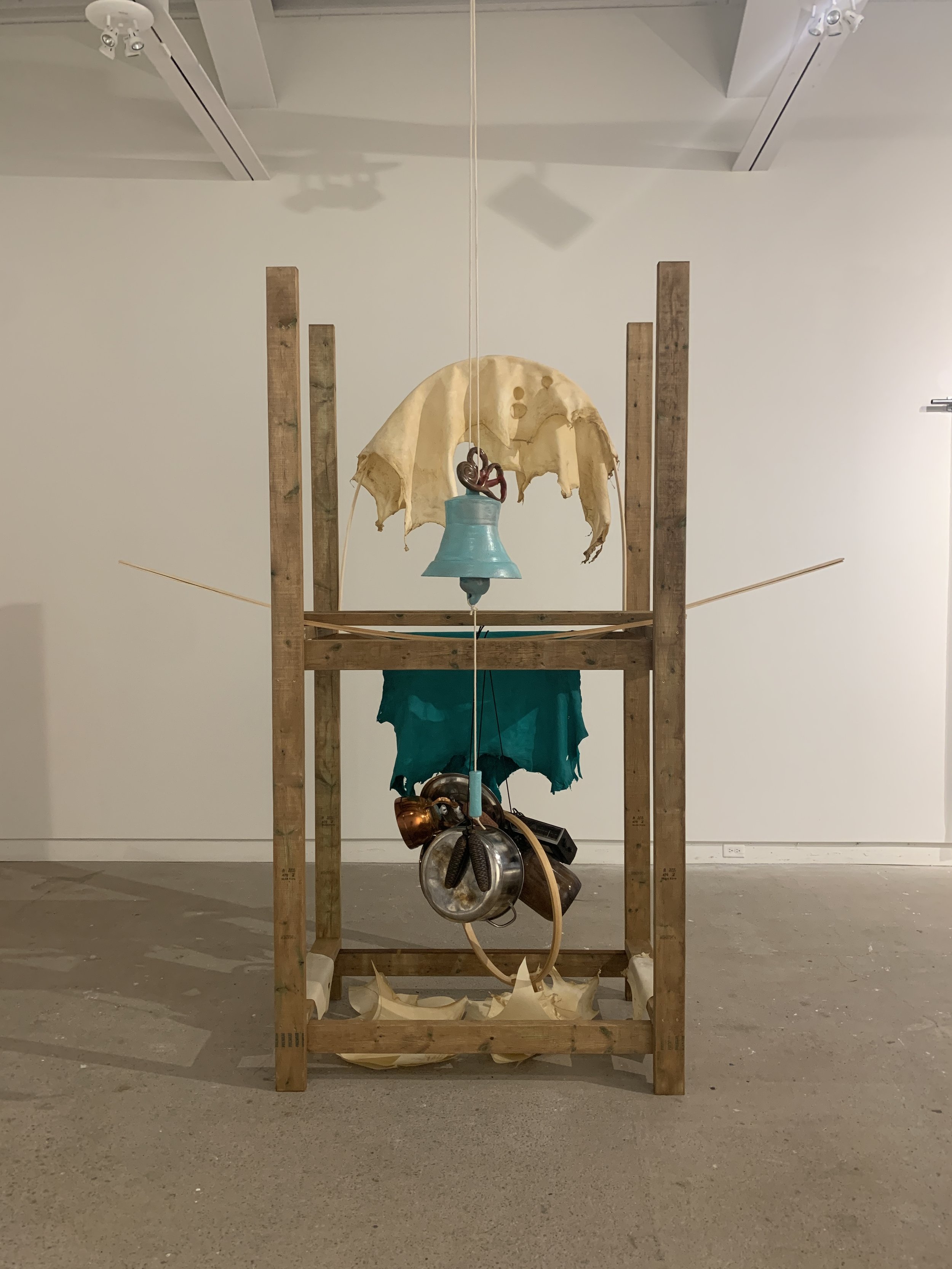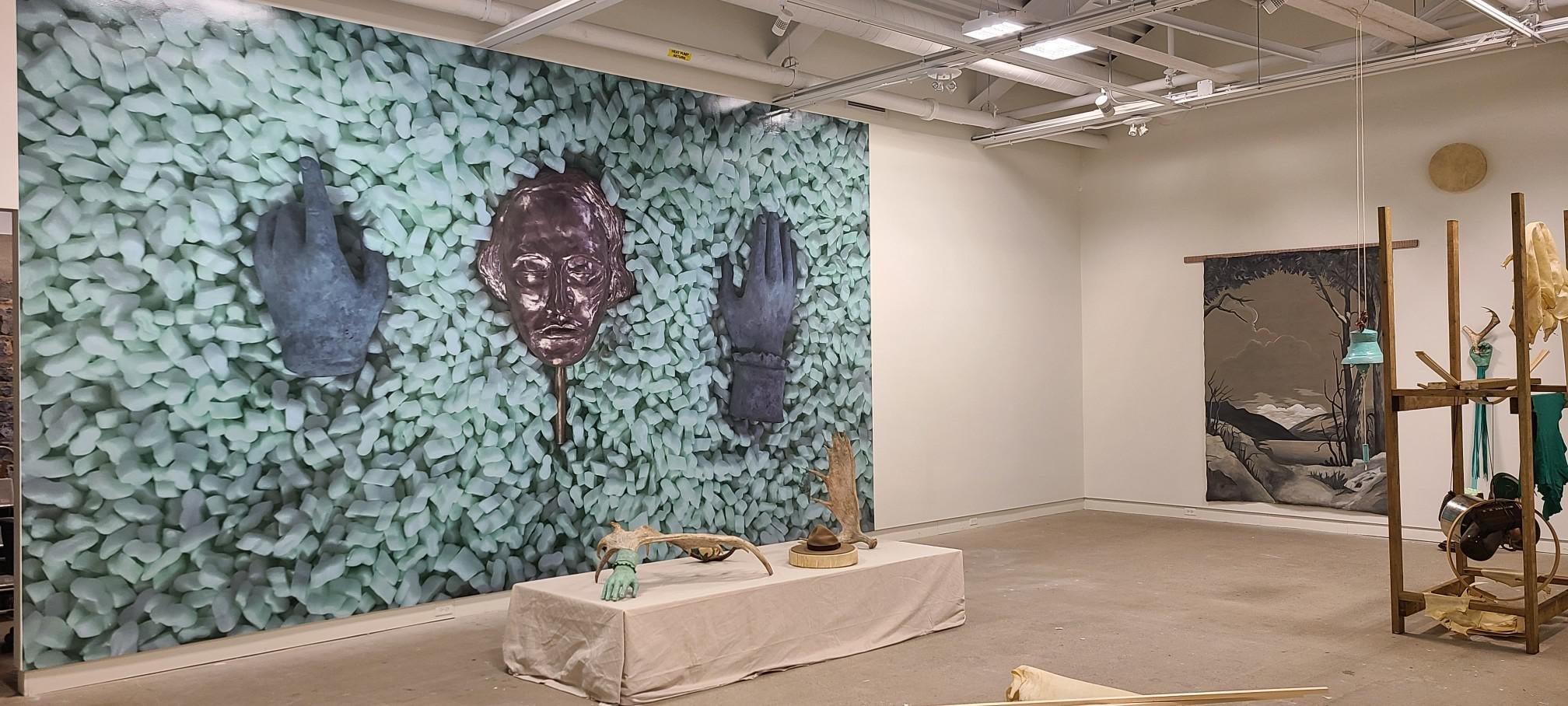
‘eenódsha’ means ‘to hear’
Presented at Modern Fuel Gallery (Katarokwi / Kingston, Ontario), 2021.
Photographs by Chris Miner
’eenodsha’ means ‘to hear’, by Logan MacDonald, confronts how accessing knowledge can be impacted and transformed by disability. MacDonald’s work is prompted by the question: “How do I create, when I am missing pieces?” Drawing from his own experience with degenerative hearing loss, which stems from the same hereditary line as his Mi’kmaw roots, MacDonald focuses his work on building a hand drum, and compensating in lyrical and imaginative ways where knowledge has been fragmented or inaccessible. In conjunction, MacDonald confronts this complex challenge by also pulling at the role colonialism has played in creating barriers to access Indigenous knowledge, by symbolically incorporating found fragments of a Sir John A. Macdonald bronze statue, as well as the bronze death mask of the first Prime Minister of Canada, which MacDonald inherited.
Dear Logan,
I am intrigued by the thoughts, knowledge and imagery explored in this exhibition, and each time I visit with the images, I find ways to connect and relate to the ideas you are working through in your process. Like many things over the last year, I would have loved the opportunity to spend time with your exhibition in person.
For me, the exhibition title, 'eenódsha' means 'to hear,' evokes different ways of knowing, the various ways in which we access and have access to knowledge and how our histories are transmitted, sometimes in incomplete forms. When this happens, how do we locate and reclaim these specific and personal histories inherited from our ancestors to make us whole?
I would like to share part of my history that I have learned in researching my maternal ancestors. My maternal grandmother's last name, Côté, is a French name derived from my great grandfather's last name, Pizindawatc, referencing the Algonquin Anishinabemowin pizindam; pizindawà-n means to listen. We use hear for sounds that come to our ears, without us necessarily trying to hear them; listen is used to describe paying attention to sounds that are going on.
There is quite a lot going on in this exhibition, highlighting a breaking down and fragmentation of cultural production as you grapple with the question of "How do I create when I am missing pieces?" Centring your disability and how it is linked to your Indigenous heritage is beautifully thought out in your exploration of drum making and the accompanying sounds. Through the building of a hand drum, symbolizing your Mi'kma'ki heritage, I can see that you are engaged in the process of bringing these incomplete fragments together, filling in the missing/inaccessible knowledge in expressive and imaginative ways to hear the voice of the drum.
The unstretched rawhide cut-outs are unfinished, draped over found relics from monuments to colonialism, intertwined with antlers that stand in as extensions of our physical ears and represent the Qalipu Nation, in an attempt to repurpose monuments to support this knowledge transfer. Reckoning with monuments is further examined in your consideration of the bronze John A. Macdonald death mask. Exhibited on the end of a steel conduit pipe and photographed with a pair of heavily patinated hands and packing peanuts, both works give the nod to your shared Scottish ancestry. When we spoke about the exhibition, you told me that "That face on the steel pipe is what I call Sir John A. Macdonald's death mask (which I'm pretending I inherited)" And I wryly responded, "Pretending? Aren't the legacies of colonialism something we have all inherited?" As someone who visited Kingston regularly in pre-Covid times, I know that monuments to Macdonald are held in particular regard. It would be interesting to observe how visitors to the gallery in Kingston are engaging with this exhibition.
Macdonald's legacy to the erasure of Indigenous histories is considered in the two painted canvases in the exhibition. One canvas draws inspiration from what is regarded as the earliest daguerreotype photograph of Indigenous people on Turtle Island, juxtaposed with an unpopulated landscape backdrop evoking those used in early studio photography in the effort to document a "disappearing" people. Reflecting on this, it is truly a testament to the resilience of our Indigenous ancestors that we are still here to receive, work with and further our fragmented histories.
I continue to listen and learn.
Mìgwech!
Linda Grussani











